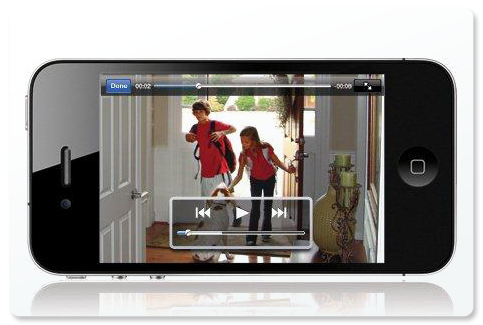Digital Video Recorders (DVR)
 Digital Video Recorders (DVR)
Digital Video Recorders (DVR)
 The ways the Digital Video Recorders DVR compresses, stores, and now costs have made it one of the top buys for consumers wanting to operate their surveillance system within the digital era. Just as with home alarm systems, technology has brought the cost of DVRs down and has also increased DVR security system capabilities.
The ways the Digital Video Recorders DVR compresses, stores, and now costs have made it one of the top buys for consumers wanting to operate their surveillance system within the digital era. Just as with home alarm systems, technology has brought the cost of DVRs down and has also increased DVR security system capabilities.
How Does the DVR Work?
DVR stands for digital video recorder. It is a tapeless device that stores video on a hard drive. Most household DVRs used for recording TV programs work with an encoder which converts images received from analog to digital. Once this is done, the encoder sends the information to the hard drive for storage and it also sends the needed information for viewing.
 To incorporate a DVR into your surveillance system, cameras with cables are hooked up to the DVR through a variety of jacks on the back of the Digital Video Recorders DVR box. The DVR then outputs the information to a monitor through typical RCA connections. However, you can’t just use any typical household DVR or TiVo for your surveillance system! You must look into buying a DVR specifically designed for home security.
To incorporate a DVR into your surveillance system, cameras with cables are hooked up to the DVR through a variety of jacks on the back of the Digital Video Recorders DVR box. The DVR then outputs the information to a monitor through typical RCA connections. However, you can’t just use any typical household DVR or TiVo for your surveillance system! You must look into buying a DVR specifically designed for home security.
Digital Video Recorders used for security purposes are the same in concept as household ones used to record TV programs, but are also typically capable of storing many more hours of footage, recording multiple channels, and producing other helpful features in the recording, organizing, and playback of video.
Because DVRs can have multiple channels, this means it can record footage produced from different cameras and simultaneously produce real time images for a live feed. In addition, home security DVRs can utilize personal computer software for remote monitoring, recording, playback, backup, and control of video and audio. Plus, with some DVRs you can retrieve and backup digital video via a USB link to your computer or networking. Some DVRs also offer a counter and motion detection feature.
The Competition
 The Digital Video Recorders, without a doubt, is dominant over the VCR (video cassette recorder) which was so prevalent from the mid 1970’s throughout the 1990’s. With the advent of DVD and Blue-ray, the VHS formatted VCR began to lose its luster for the avid TV watcher and likely for the average home security consumer. Today, the VCR has become nearly extinct, though a small variety of DVD/VCR combos and time lapse VCRs are still sold at area retailers and some home security stores. Never-the-less, when it comes to home and small business security surveillance, the DVR offers better quality, more storage, and more convenience than any device or program ever before.
The Digital Video Recorders, without a doubt, is dominant over the VCR (video cassette recorder) which was so prevalent from the mid 1970’s throughout the 1990’s. With the advent of DVD and Blue-ray, the VHS formatted VCR began to lose its luster for the avid TV watcher and likely for the average home security consumer. Today, the VCR has become nearly extinct, though a small variety of DVD/VCR combos and time lapse VCRs are still sold at area retailers and some home security stores. Never-the-less, when it comes to home and small business security surveillance, the DVR offers better quality, more storage, and more convenience than any device or program ever before.
DVR Popularity
Digital Video Recorders are popular because first, they are tapeless. They can record and store hundreds of hours of high resolution video. The higher the resolution means the better the picture. In addition, a DVR makes it easy to review video. This is a top selling point because you have precise and convenient control over playback. This means you can view what has been recorded without actually having to stop recording, unlike a VCR must do. Video outputs also make it easy for a DVR to transfer video to a tape if needed.
Finally, DVRs don’t always have to be the bulky VCR looking kind, which are part of a surveillance system. A Digital Video Recorders can be integrated into a portable camera, a nanny cam, or even a spy pen, to name a few.

Comments
Post a Comment